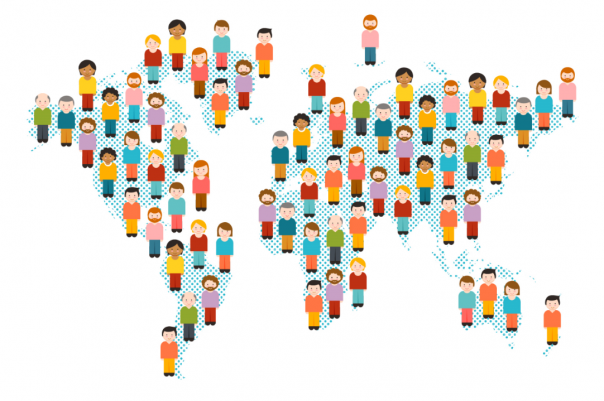Neobanks are rising in the West, but there is little activity in Asia — which presents an opportunity for entrepreneurs and investors

The 2015 report by the Freelancers Union and online freelancing platform Upwork found that over a third of U.S. workers (nearly 54 million) did some freelance work in the previous year.
By 2040, the American economy will be “scarcely recognizable,” according to a new report published by the Roosevelt Institute and the Kauffman Foundation. But the rise of the freelancer is hardly an American phenomenon.

A study from the U.K.-based business group Approved Index recently explored the rate of entrepreneurship on a global scale by calculating the percentage of the population that owns or co-owns a business in each nation.
By 2013, Vietnam, a nation with an extensive history of socioeconomic distress, had moved up into the category of “middle-income” nations. The Approved Index study reveals that 13.3 per cent of Vietnam’s population is self-employed, ranking it No. 5 for entrepreneurship across the globe.
China is No. 11 (10.2 per cent).
The desire for autonomy is strongest in China, especially among young people, indicating a generational shift towards greater freedom, entrepreneurship, and specialist skills.
Also Read: In Photos: From iflix to REV Asia to iCar, take a tour of the Catcha Group offices
According to the PwC report, the “desire for autonomy is strongest in China, especially among young people, indicating a generational shift towards greater freedom, entrepreneurship, and specialist skills in this rapidly evolving economy.”
Half of the Chinese respondents in the study said they do not expect traditional employment to be available to them in the future.
Technology is an ends to a very old mean
Technology is revolutionizing the way we connect, communicate, and relate to the world. Yet one thing that has remained true of workers regardless of geography is that all want to survive and succeed.
As technology penetrates more corners of the globe than ever before, that basic desire is growing more complex. Not only do more people simply want work, they now want more control over how they work—whether that’s better work-life balance, choosing a passion-driven career, or being their own boss.
Put simply, the gig economy makes all those things possible on a scale like never before.

Millennials are native freelancers, and it shows: They are freelancing at a higher rate than any other group. Independent workers are freelancing by choice.
Survey respondents told that they choose to freelance because of the flexibility, freedom, and balance that it offers.
In our survey, 60 per cent of respondents said they started freelancing more by choice than by necessity. Critically, half of freelancers we talked to said that they wouldn’t take a traditional job, no matter how much it paid. And because being a freelancer lets you work from anywhere, a third of freelancers say they have been able to move because of the flexibility their career provides.
The fixation on millennials—how they supposedly do and don’t work, what they supposedly do and don’t want from their careers—is overblown.
Why? Because that conversation lacks focus.
The oldest millennials are now turning 35 — they’re hardly the new kids on the block anymore. And they share little (in terms of experience, working styles, and priorities) with Generation Z, the youngest demographic of new workers now entering the workforce.
Gen-Z roughly encompasses today’s teens and young adults born after 1995, the oldest of whom are 21 years old—next year’s entry-level employees.
As one observer writes, summing up recent research, “These are kids who grew up in a post-9/11 world, during a recession, and during a time in which 1 in 4 American children lived in poverty.”
Also Read: How can edtech startups make learning more relevant in a digital-driven world?
All that will have a major impact on Gen-Zers’ prospects and approach to realising them. A recent Northeastern University study on Gen Z concludes that the generation is “entrepreneurial [and] wants to chart its own future”.
Many of Gen-Zers’ traits seem likely to propel them toward innovation and growth hacking in a wide range of current and emerging industries.
The fact is that for independent workers, tomorrow’s entry-level employees, entrepreneurs, growing startups, and establish corporations, sustainable growth and innovation are never one-time things. It takes a deep emotional, systemic, and cultural stake in the changing climate—which starts, of course, with an understanding of it.

Less isolated than before
It’s not uncommon for independent workers to feel isolated. But the rise of co-working spaces in top urban centers is changing that, offering freelancers unprecedented support and resources. Co-working spaces are providing more than just a sense of community that comes from working around others.
WeWork (recently opened several co-working spaces across China, India, Australia, Hong Kong and South Korea), for instance, is one of the most popular providers of workspace for independent contractors, and it’s expanding to major cities around the world.
The company has raised the bar in part by focusing on creating a collaborative ambience you’d find at any cutting-edge startup. WeWork spaces even boast arcades, fresh fruit, and beer on tap. And more than 150 WeWork partners offer services like human resources, web consulting, and accounting help—removing some of onus on freelancers to do everything themselves.

Adam Neumann, the CEO and Founder of WeWork, mentioned about growth of the gig economy in China: “We will open several locations in China. In Shanghai, we will open locations in Yunan Lu, East Ocean Center (Yan’an Donglu) and Huaihai Zhong Lu very soon. In Beijing, WeWork Guanghua Lu is going to be opening in March and another location in the city will be opening by summer 2017.”
“China’s fast growth of startups, and nationwide encouragement of innovation and entrepreneurship, is a great opportunity for startups. There is so much demand yet to be met, and these are great opportunities for innovation. Of course, for WeWork it is also a great opportunity to grow in the world’s second biggest economy.”
Co-working spaces were home for 72.3 per cent of the 685 verified start-ups in Australia that responded to the 2016 Startup Muster survey, up from 49 per cent in 2015.
“Over the past six years, high-growth small and medium enterprises (SMEs) that make up just 6 per cent of NSW firms created over 1 million new jobs,” Jobs for NSW chair David Thodey said.
“We want to create more high-growth SMEs by providing a stronger entrepreneurial ecosystem. By helping to build and support the start-up ecosystem in New South Wales we can encourage a pipeline for future growth businesses and jobs,” he said.
How does all of this impact fintech?
Financial services for SMEs could change dramatically over the next few years, wrote the Head of Operations & Innovation at Civilised Bank Will Beeson. After ridding the world of outdated, predatory incumbent banks in the interest of honest, hardworking, iPhone-wielding men and women, fintech was going to fundamentally address the woefully inadequate financial services available to small and medium-sized enterprises (SMEs).
However, nine years on from the 2008 financial crisis, retail customers still by and large seek financial services from incumbent organisations, and SMEs are hardly better off than they were before.
Also Read: 12 lessons Asian banks can learn from Goldman Sachs, BBVA
In the early days of post-2008 fintech, a number of prominent alternative-lenders in the US and UK, including Kabbage, Funding Circle, MarketInvoice and others, stepped into the void when banks stopped extending credit to SMEs.
In the same period, a few high-profile payments companies, including Square, Stripe and Klarna, developed payment services for small and medium-sized businesses. Unfortunately, since then, there hasn’t been much action in SME fintech.
Until now.

For the last year there were many representatives of neobanks (a term used to describe financial institutions that operate entirely through the internet) and many discussions around them with a lot of attention.
But most of them are neobanks for retail clients – and I think that neobanks for SMEs (like Holvi, Tochka, Tide, CivilizedBank) are booming right now and demand for digital banks for entrepreneurs will rapidly increasing during the current year.
Examining geographic distribution of neobanks, we can observe that most of them are located in Europe, with some interesting solutions in USA and Canada, big demand in Brazil and low activity in Asia.
This should motivate Asian banks and investors to look closely at what is created abroad, invest in it and work in collaboration with the teams involved on how to bring these solutions to Asian markets.
And bank branches, struggling to find their place in digital economy, can be a mix of digital banks’ showrooms and co-working spaces for bank customers (like it is already happening in US, Italy and Poland).
—
Copyright: aleutie / 123RF Stock Photo
Vladislav is a Managing partner at Life.SREDA venture capital fund. He is also Chairman of the Board LifePay Global. Based in Singapore, he specialises in fintech investments.
The post The gig economy is on the rise in Asia, and it drives fintech for SMEs appeared first on e27.